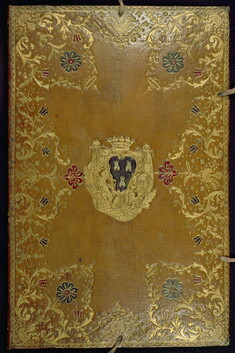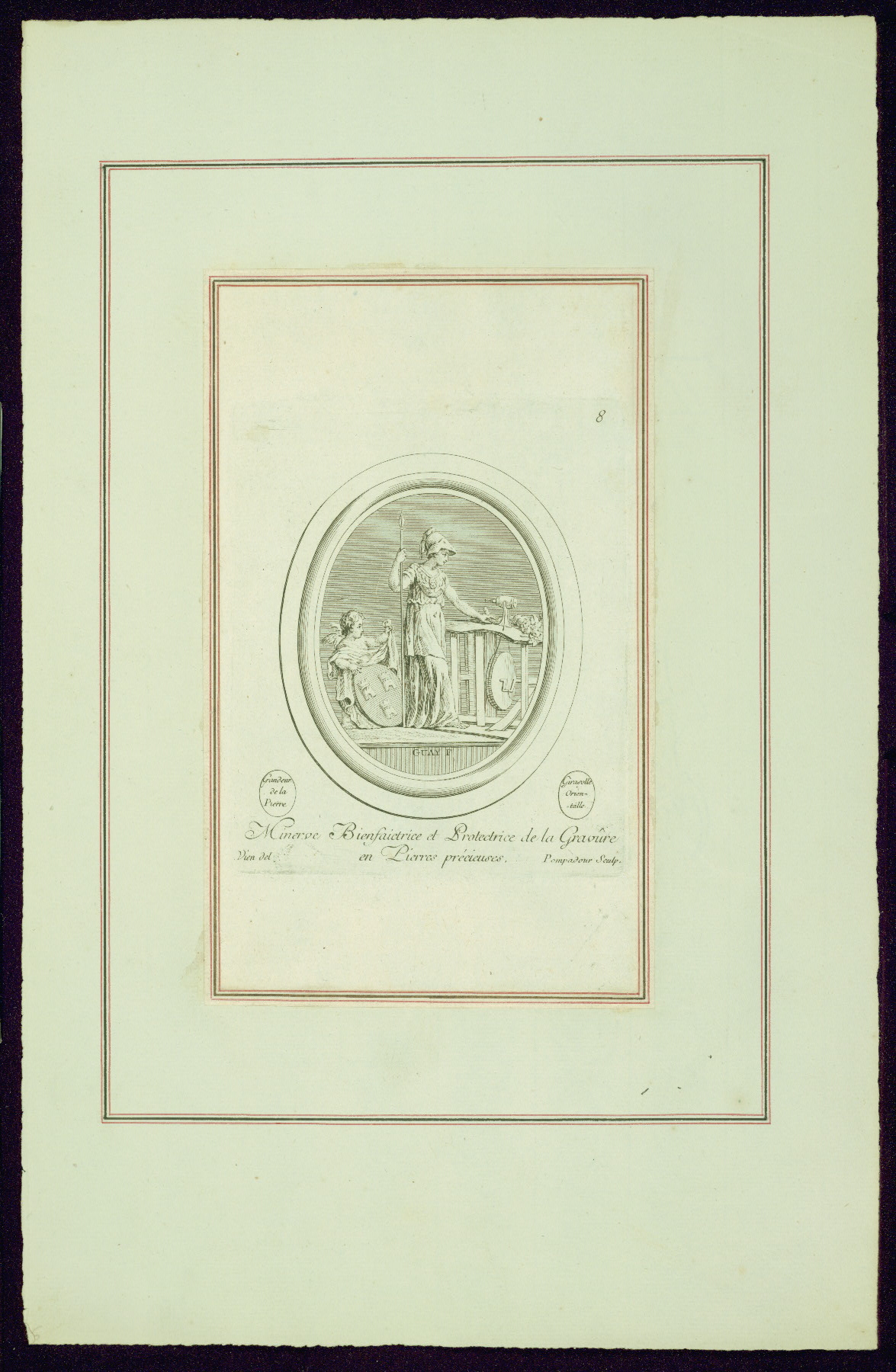Minerva, Benefactor and Patron of Carving on Precious Stones, from Madame de Pompadour's "Suite of Prints"
Madame de Pompadour is depicted here as Minerva, the Roman goddess of wisdom and patron of the arts, placing a cornucopia (horn of plenty) on a lathe, or turning machine, to honor the art of gem carving. The winged putto behind her carries a shield bearing Pompadour’s coat of arms instead of the head of Medusa typically found on Minerva’s shield. Guay designed the intaglio on which this print is based as a tribute to his devoted patron. By translating the tiny and translucent carved gem into the black-and-white print medium, Pompadour made the image far more legible to the naked eye.
Provenance
Provenance (from the French provenir, 'to come from/forth') is the chronology of the ownership, custody, or location of a historical object. Learn more about provenance at the Walters.
Jeanne Antoinette Poisson, Marquise de Pompadour, ca. 1755. Purchased by Henry Walters, Baltimore, 1895; by bequest to Walters Art Museum, 1931.
Exhibitions
| 2016 | Madame de Pompadour, Patron and Printmaker. The Walters Art Museum, Baltimore. |
Geographies
France, Paris (Place of Origin)
Measurements
Folio H: 14 9/16 × W: 9 3/8 in. (37 × 23.8 cm)
Credit Line
Acquired by Henry Walters, 1895
Location in Museum
Not on view
Accession Number
In libraries, galleries, museums, and archives, an accession number is a unique identifier assigned to each object in the collection.
In libraries, galleries, museums, and archives, an accession number is a unique identifier assigned to each object in the collection.
92.548.14
Do you have additional information?
Parent Object



